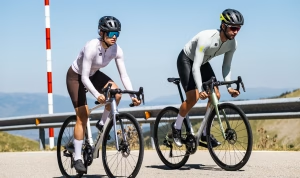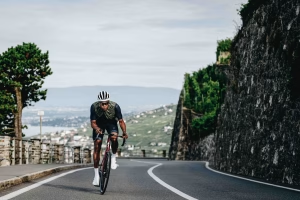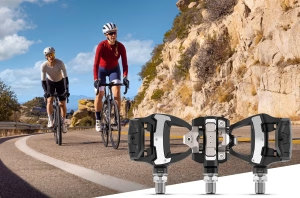At a time when tubeless cycling is becoming increasingly popular, I remain enamoured of the regular inner tube. Especially the Schwalbe Aerothan. Because it has been on my cyclo-cross bike for 3 years now, without any punctures. I think that is quite an achievement.
January 2021. I buy a new cyclocross bike and immediately fit new outer tyres. I also want to try the Schwalbe Aerothan inner tubes (I received them from my club BEAT a few weeks earlier to test them) and put them on. Fast forward to January 2024. 'Damn,' I think. 'I've had my bike for 3 years and have never had a puncture.' And since I ask quite a lot of my bike, I think that's pretty clever.
Schwalbe Aerothan
First about the Schwalbe Aerothan inner tubes. These are made of a new type of plastic, thermoplastic polyurethane. Compared to a (standard) butyl inner tube, the Aerothan is a lot more compact and lighter. The material is also quite stiff so puncture resistance should be high. Add to this a low rolling resistance, and in theory you have a very fine inner tube. But what is my experience?
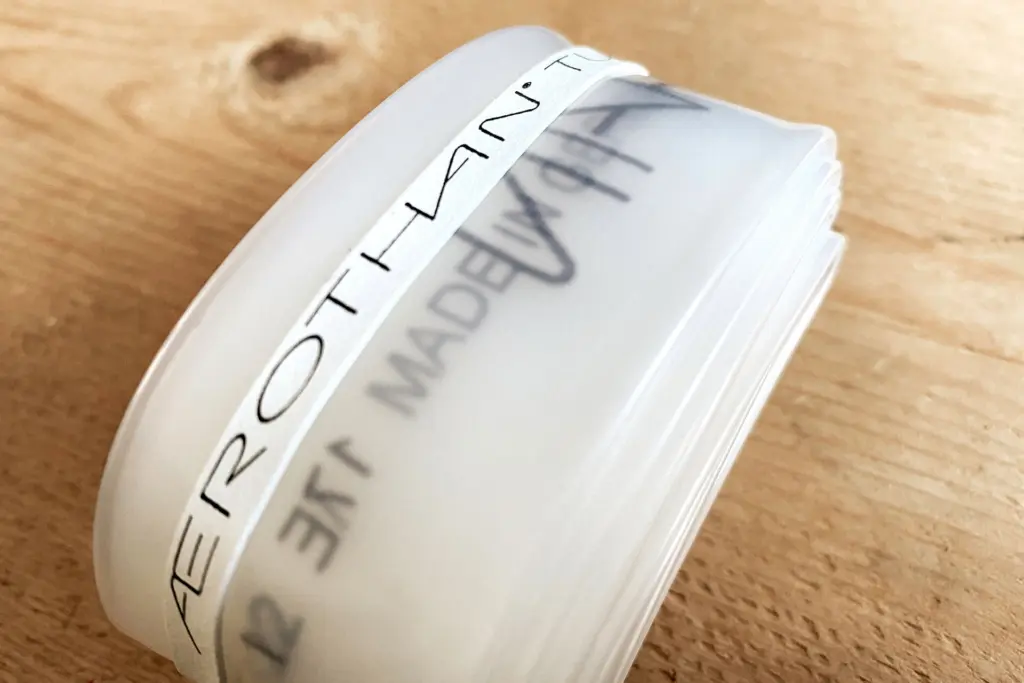
Lightweight
Lightweight tyres are definitely lightweight. There are several Aerothan inner tubes. The road bike tyres weigh only 41 grams, for my wide gravel tyres you end up with 61 grams per tube. With butyl inner tubes, this quickly adds up to 150/160 grams, so count your winnings. The Aerothan inner tubes are not only a lot lighter than comparable butyl inner tubes, but also a lot more compact because the material is less thick. This makes the Aerothan inner tubes very handy to take with you as a spare tyre.
Rolling resistance
The rolling resistance of the Aerothan Allround should also be a lot lower. I find that difficult to judge. To be honest, I don't feel any difference in inner tubes while cycling. That's a minimal difference, so you have to have a lot of product knowledge and cycling experience to notice this. And on my bike are now the Hutchinson Overide TLR outer tyres with semi-slick profile, not the tyres with the lowest rolling resistance. (The Schwalbe G-One's I usually choose are unfortunately sold out everywhere at the time) With this setup, I can't easily notice the difference with regular inner tubes.
Leakage resistance
Puncture-proof, the inner tubes certainly are. Over the past 3 years, the bike has been used for cyclocross, lots of gravel rides, bikepacking weekends and cycling holidays. All in all, thousands of kilometres over gravel, gravel, asphalt, strade bianche, mountain bike courses, tree roots, with luggage on the bike, or a bike trailer behind it. And so far, after 3 years of cycling, still no flat tyre.
By the way, should the tyre ever go flat, you can repair it with the Schwalbe Glueless Patches. These simply stick to the Aerothan without sanding. Should you throw the tyre away? Because the Aerothan is made entirely of plastic, including the valve, this 100% inner tube is recyclable.
Low tyre pressure
What else stands out is that you can cycle just fine with low tyre pressure. In the mud 1.5 bar? No problem. Enough stability even at low tyre pressure. That again comes nicely close to a tubeless setup.
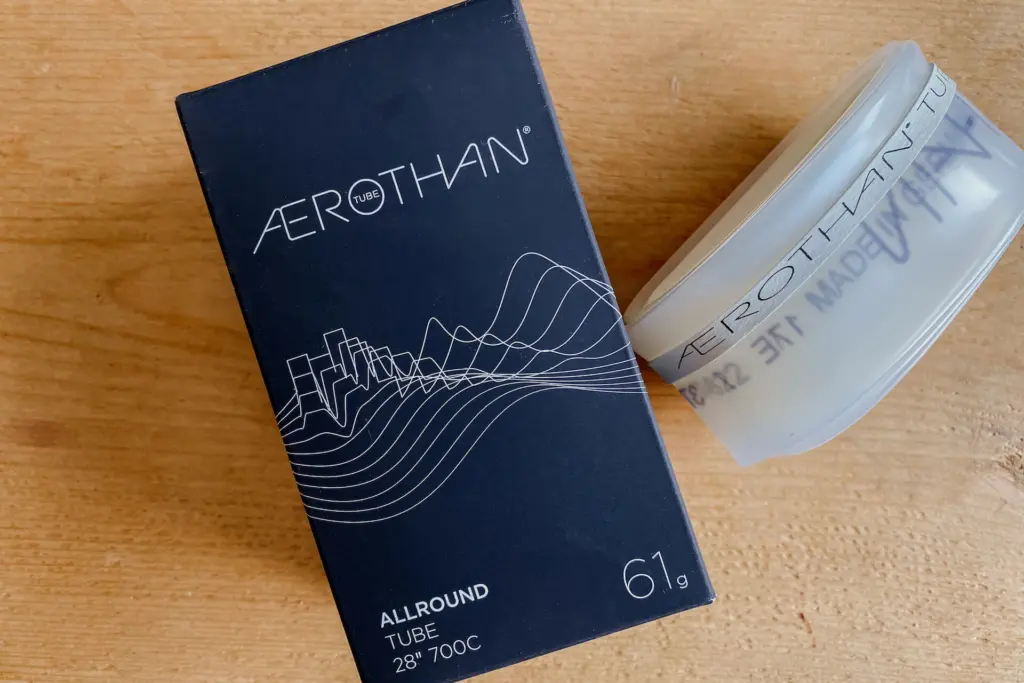
Different types of Aerothan inner tubes
There are 4 different types of Aerothan inner tubes. Which one you need depends on your bike and the tyre width. There are tyres for road bikes, gravel/cyclocross bikes and mountain bikes.
- Schwalbe Aerothan Race Inner Tube for road bike - 41 grams, suitable for 23 to 28 mm road bike tyres
- Schwalbe Aerothan Endurance Race Inner Tube - 50 grams, suitable for 28 to 35 mm, including gravel and cyclocross tyres
- Schwalbe Aerothan All-round inner tube - 61 grams, suitable for 17 to 50 mm, including trekking and gravel tyres
- Schwalbe Aerothan MTB inner tube - 87 grams, suitable for 54 to 62 mm mountain bike tyres
Schwalbe Aerothan experience
I use the Aerothan All-round inner tube which is suitable for tyres between 37 and 50 mm wide. Ideal for gravel tyres, in other words. Fitting takes some time, but that could also be due to my new and stiff outer tyres. The Aerothan tyres are incredibly light, and the puncture resistance is very good so far. Of course, this inner tube can also get a puncture, but it's good to know that you can easily patch it then.
The inner tubes give the feel of a tubeless setup. So if you don't want to ride tubeless - making tyres tubeless I find is quite a hassle with tubeless fluid anyway - these tubes will get you pretty close.
The weight in particular makes the tyres so nice. With a price of €27.90 each, they are not the cheapest inner tubes, but if you think about it, this is a cheap way to save 100 - 200 grams.
One drawback? Longer valves are unfortunately not included (yet), the standard is 40mm. So if I want to mount them on my road bike with high rims, I will have to solve this with valve extenders. That will add some weight anyway.
But all in all, a very fine inner tube that will hopefully last for years to come.


